
When looking at the topic, the first question people may ask is why copyright can be and/or need be involved in a conflict purely between trademarks.
If the opponent cites its unregistered trademark or a narrowly registered trademark against the opposed mark, the possible grounds of the opposition normally include the following:
1) "Well-known trademark" claim to expand the protection scope of the cited narrowly registered trademark;
2) "Prior use and reputation" claim which applies to unregistered cited trademark which had been used earlier in China on same or similar goods of the opposed mark;
3) "Agency or representative" claim which applies where the opposed party had business relationship with the opponent before the filing date of the opposed mark.
However, in actual practice, if the opponent is a foreign company, there are always many challenges to provide sufficient evidences according to the official requirements to support any of the above grounds, e.g. only manufacture but not sell in China (OEM), or the old sales records are not available, or there was no contract between the parties to prove business relationship.
So here comes the increasingly popular claim of "prior copyright" where the opposed mark is identical or substantially similar to the opponent's mark.
In short, the opponent's burden of proof for "well-known trademark", "prior use and reputation" and "Agency or representative" is so high that most foreign brand owners have found it really difficult to stop others from copying the same mark; while the claim of "prior copyright" seems to open another door for protection.
Legal basis of "prior copyright" in trademark opposition
According to Article 31 of China Trademark Law: An application for the registration of a trademark shall not create any prejudice to the prior right of another person...
According to Article 17 of Supreme Court Opinion over Administrative Cases of Granting and Determining Trademark Rights:
The summarizing provision of Article 31 of China Trademark Law "An application for the registration of a trademark shall not create any prejudice to the prior right of another person" shall be correctly understood and applied. The People's Court, when examining and determining whether the disputed trademark creates any prejudice to the prior right of another person, shall protect the prior rights which are specifically provided under China Trademark Law pursuant to the specific provisions of China Trademark Law. Where China Trademark Law is silent, the legitimate to be protected pursuant to the General Civil Law and other laws and regulations shall be protected pursuant to this summarizing provision.
According to Article 2 of China Copyright Law:
Works of Chinese citizens, legal persons or entities without legal personality, whether published or not, shall enjoy copyright in accordance with this Law. Works of foreigners first published in the territory of the People's Republic of China shall enjoy copyright in accordance with this Law.
Any work of a foreigner published outside the territory of the People's Republic of China which is eligible to enjoy copyright under an agreement concluded between the country to which the foreigner belongs and China, or under an international treaty to which both countries are parties, shall be protected in accordance with this Law.
Based on the above provisions, copyright can be a type of such "prior right" as provided under Article 31 of China Trademark Law, which could be claimed against trademarks in opposition.
In practice, the parties often argue on the following issues in trademark opposition cases where the opponent cites prior copyright of its trademark:
1) Whether or not the opponent's trademark constitutes works protectable as copyright?
2) Whether or not the opponent owns the copyright?
3) Whether or not the copyright is earlier than the filing date of the opposed trademark?
4) Whether or not the opposed trademark is identical with or substantially similar to opponent's copyright?
5) Whether or not the copyright is accessible to the opposed party before the filing date of the opposed trademark?
We will discuss about the examination criteria as well as required evidences for each of the above issues.
ISSUE 1. Whether or not the opponent's trademark constitutes works protectable as copyright?
According to Article 3 of China Copyright Law: For the purpose of this Law, the term "works" includes works of literature, art, natural science, social science, engineering technology and the like which are created in the following forms:
(1) written works;
(2) oral works;
(3) musical, dramatic, quyi, choreographic and acrobatic art works;
(4) works of fine art and architecture;
(5) photographic works;
(6) cinematographic works and works created in a way similar to cinematography ;
(7) drawings of engineering designs and product designs, maps, sketches and other graphic works as well as model works;
(8) computer software;
(9) other works as provided for in law and administrative rules and regulations.
As regards to trademarks which claim protection as copyright, such trademarks shall fall into the category of "works of fine art" of the above provision because the other categories would not meet the nature and types of trademark protectable under China Trademark Law.
To further define "works of fine art", we may refer to Article 4(8) of Implementing Regulations of Copyright Law:
(8) works of fine art are two or three dimensional works created in lines, colors or other medium which, when being viewed, impart aesthetic effect, such as paintings, works of calligraphy, sculptures and works of architecture.
Furthermore, according to Article 2 of Implementing Regulations of Copyright Law: The term "works" used in Copyright Law refers to intellectual creation in the field of literature, art and science, which has originality and can be reproduced in certain tangible form.
Thus, the test of whether a trademark constitutes works protectable as copyright should also rely on whether the trademark 1) has originality and 2) can be reproduced in tangible form.
In the case THE TDL GROUP CORP. v. TRAB, Beijing Higher Court held "the works should have originality, which means that it should express the author's own choice, selection and arrangement with the author' characteristic. What THE TDL GROUP CORP. claims for copyright protection is the handwriting form of "Tim Hortons", which does not constitute works under China Copyright Law. The handwriting form is as below:
 (opposed trademark)
(opposed trademark) (opponent' cited trademark & claimed prior copyright)
(opponent' cited trademark & claimed prior copyright)
The message conveyed by the Court in the above case is the significance of the test of "originality", thus on the other hand, if a signature has originality, it might also enjoy protection of copyright.
In the case TRAB, BABOLAT VS v. Guangzhou Autu Sports Co., Ltd., Guangzhou Sibada Enterprise Development Co., Ltd., Beijing Higher Court reversed the 1st instance decision made by Beijing No. 1 Intermediate Court, and held "the letter 'O' in the middle of the opponent's cited trademark is stylized, which divides the letters "BAB" and "LAT" into two symmetrical parts, which renders the mark as a whole with originality, and thus constitute the works under China Copyright Law".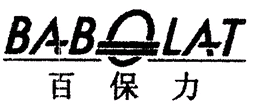 (opposed trademark)
(opposed trademark) (opponent's cited trademark & claimed prior copyright)
(opponent's cited trademark & claimed prior copyright)
It is noteworthy that the definition of "distinctiveness" of trademark is different from the definition of "originality" of copyright, i.e. the former need to take into consideration of the meaning and its connection with the designated goods/services; while the latter focuses on the design only. For example, it is easy to understand that a highly designed candy-shape drawing may not be distinctive as trademark over goods of candy, but may be protected as copyright; or a pure word mark in standard font may be distinctive as trademark but may not protected as copyright.
ISSUE 2. Whether or not the opponent owns the copyright?
According to Article 7 of Supreme Court Interpretation on Issues of Applicable Laws for Copyright Civil Dispute Cases: Documents concerning copyright, such as manuscript, original copy, legitimate publication, copyright recordation certificate, certification issued by certifying organization or contract of ownership, can serve as evidence of copyright.
In the case Yang Suiqin v. TRAB, Beijing Higher Court held "the affidavits issued by Behringer (opponent) and the design company in 1999 proves that the device in the opposed mark was designed by the design company authorized by Behringer, and the design company certified that the copyright belongs to Behringer. Meanwhile, the copyright recordal certificate submitted in the 1st instance of administrative litigation before Beijing No. 1 Intermediate Court can support the facts revealed in the above evidences. Although the copyright recordal certificate was not submitted to TRAB in the opposition review stage, such evidence can serve as supplementary evidence in support of the affidavits issued by Behringer and the design company, and thus can be regarded as valid evidence in the current case".
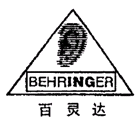 (opposed trademark)
(opposed trademark)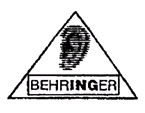 (opponent's cited trademark & claimed prior copyright)
(opponent's cited trademark & claimed prior copyright)
In the case Tiger Thermo Co., Ltd. v. TRAB, the opponent submitted two sets of evidences in support of its claim of ownership of prior copyright, i.e. 1) copyright recordal certificates of the opponent's cited trademark and 2) affidavits issued by the board director and employee of the opponent company. Beijing No. 1 Intermediate Court held "since China adopts voluntary principle of copyright recordal, the Copyright Bureau does not conduct substantial examination over the works to be recorded or the copyright of the works, the recordal certificates showing that the works was created on August 1, 1982 and published on February 3, 1983 only serve as the opponent's own statement, and thus are weak in evidential effect; furthermore, the board director and employee of the opponent company are both related to the opponent, so the evidential effect of their affidavits are also limited. Thus, without other supporting evidence, the claim of prior copyright cannot be supported."
 (opposed trademark)
(opposed trademark) (opponent's cited trademark & claimed prior copyright)
(opponent's cited trademark & claimed prior copyright)
It is thus clear from the above case that mere copyright recordal certificate and self declaration are not sufficient to establish ownership of copyright.
ISSUE 3. Whether or not the copyright is earlier than the filing date of the opposed trademark?
According to Article 6 of Implementing Regulations of Copyright Law: Copyright is protected since the completion of the creation.
Thus, the test is whether the date of completion of the creation is earlier than the filing date of the opposed mark, which may rely on the date shown in the above mentioned evidences, e.g. manuscript, original copy, legitimate publication, copyright recordation certificate, certification issued by certifying organization or contract of ownership.
Similarly, merely the copyright recordal certificate showing a certain date of completion of creation is not sufficient.
ISSUE 4. Whether or not the opposed trademark is identical with or substantially similar to opponent's copyright?
The examination criteria over similarity in respect of copyright are different from that between trademarks. Let us look at the following examples, which are self-explanatory:
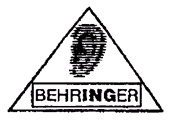 and "
and "![]() " may constitute similar trademarks, but not similar in respect of copyright.
" may constitute similar trademarks, but not similar in respect of copyright.
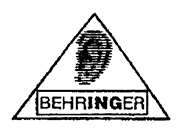 and
and might not or at least might be arguable as similar trademarks, but may be deemed similar in respect of copyright.
might not or at least might be arguable as similar trademarks, but may be deemed similar in respect of copyright.
To summarize, the difference of the examination criteria arise from the difference of the nature of trademark and copyright, i.e. the former is for distinguish the sources, and thus focuses on likelihood of confusion; whereas the latter is for protect the work itself, and thus focuses on whether one is a copy from another, either as a whole or partially.
ISSUE 5. Whether or not the copyright is accessible to the opposed party before the filing date of the opposed trademark?
The reason that "accessibility" is one of the determining factors in dispute between opposed trademark and prior copyright is that only if the prior copyright is accessible before the filing date of the opposed mark, can the ground be supported that the opposed trademark owner copies the prior copyright in the first place. It is an implied logic here.
In practice, the fact of "accessibility" is usually proved by evidences of "publication", which is defined in Article 10 (1) of Copyright Law: the right of publication, that is, the right to decide whether to make a work available to the public.
Further, according to Article 9 of Supreme Court Interpretation on Issues of Applicable Laws for Copyright Civil Dispute Cases: The term "to make a work available to the public" under Article 10 (1) of Copyright Law means that the copyright owner or those authorized by the copyright owner publicize the works to uncertain people, but not necessary to reach public awareness.
Thus, for example, if the opponent's prior copyrighted logo is used in advertisement in China, such act would surely constitute "publication" that would suffice "accessibility"; but how about advertisement outside China? Does such "publication" also suffice "accessibility" or not? In another word, is the work accessible only when the publication happens in China, or anywhere in the world?
The TRAB's attitude can be seen from the reasoning in some of its decisions, for example, "the opponent claimed that the opposed mark violates its prior copyright, but failed to provide evidences showing that the works had already been used or advertised publicly in China mainland before the filing date of the opposed mark, and thus cannot prove that the opposed party had been possible to access to the works before filing the opposed mark. Therefore, the opponent's claim is denied". To summarize, the TRAB holds the publication must be in China mainland in order to support "accessibility".
The Court's attitude cannot be clearly drawn by now. Nevertheless, there might be some hint or suggestion in the case Shantou Longhu Jinhe Food Co., Ltd. v. TRAB, where Beijing Higher Court supported the opponent's claim of prior copyright against the opposed mark, where the only evidences relevant to publication include: 1) the opponent's 100 anniversary brochure "The present lies in the past (1894 - 1994)" which contained the logo and was published in 1994 (without mentioning whether it was published in China); 2) the evidences proving that the opponent attended an exhibition in Hong Kong in 1996 where the opponent promoted the logo. Thus, while neither of the two evidences proves publication in China mainland, Beijing Higher Court still affirmed the rejection of the opposed mark based on the opponent's prior copyright. However, since this decision did not mention the issue of "accessibility" at all, it is hard to tell the Court's definite opinion over the geographical requirement of publication.
 (opposed trademark)
(opposed trademark) (opponent's cited trademark & claimed prior copyright)
(opponent's cited trademark & claimed prior copyright)
From another point of view, the test of "accessibility" may also need to take into consideration of the extent of originality of the works, i.e. if the opposed mark is identical to a design with high originality, it can be deducted that it is highly likely that the opposed party copied such design, unless the opposed party can justify such coincident with sufficient evidences.
As the prior copyright ground is now more and more frequently claimed in trademark disputes, we may need to study the issues in the gap and reach the balance between limiting the scope of protection of copyright in trademark cases and protecting the legitimate rights of copyright owners.


Follow us






